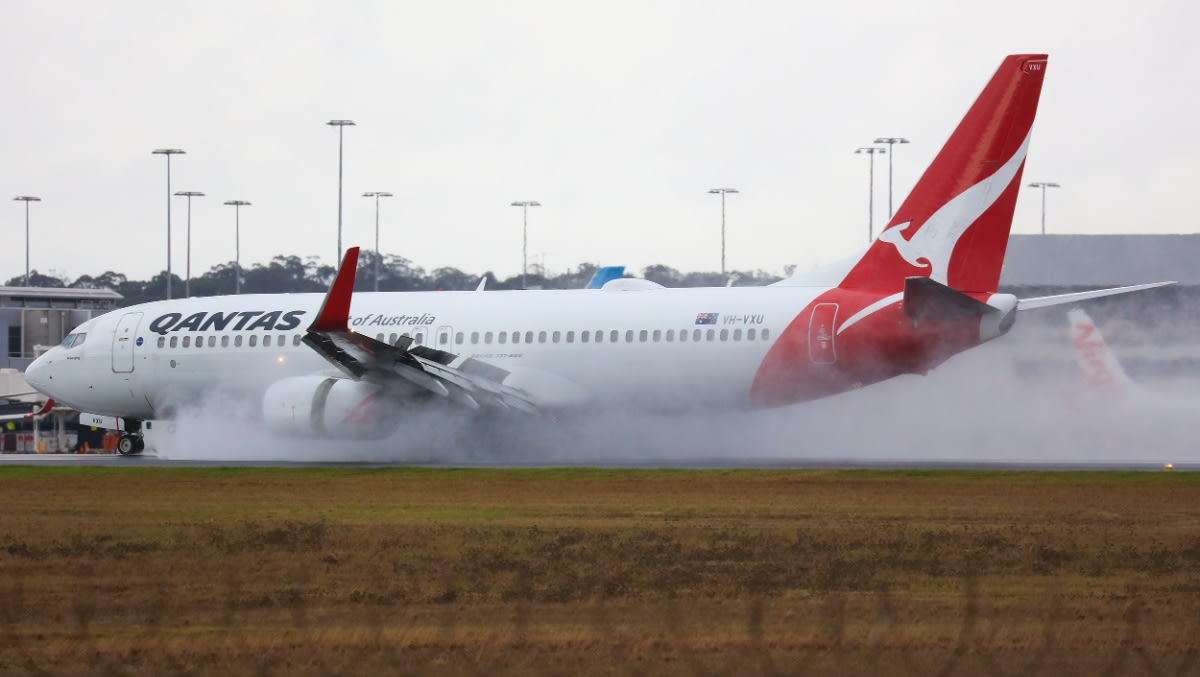
Delays at Perth Airport contributed to the crew of a Qantas 737 declaring a fuel mayday last year, an ATSB investigation has concluded.
The report revealed that during the flight, the crew descended from 34,000 ft to 28,000 ft due to turbulence, but that resulted in the aircraft using more fuel than planned.
This, in combination with delays at its destination airport, caused the crew to declare a fuel mayday in order to secure a priority landing slot.
It significantly came during a period when all-time records were being broken for delays across the industry, as aviation companies struggled with COVID isolation and a nationwide talent shortage.
The full ATSB report reveals how, on 18 July 2022, the Qantas 737-838 was operating flight QF933 from Brisbane to Perth with 174 people on board, including two flight crew.
During the cruise, the flight crew descended from 34,000 ft to 28,000 ft due to turbulence and to take advantage of lesser headwinds, but identified they were using more fuel than planned.
“As the aircraft reached the decision point, the flight crew were aware the aircraft had used 600—700 kg more fuel than planned, but there was still sufficient fuel to continue to Perth,” ATSB Director Transport Safety Stuart Macleod said.
“However, advice then came from air traffic control (ATC) that delays at Perth were longer than the promulgated estimate of 10 minutes.”
Given this new information, the flight crew determined they would be unable to accept the ATC delay without landing in Perth below fuel reserves (sufficient fuel, as required by the Civil Aviation Safety Regulations, to allow up to 30 minutes flying at holding speed, at 1,500 ft above the aerodrome elevation).
ATC advised the flight crew that the order of aircraft in the arrival sequence could not be changed unless they declared a fuel MAYDAY.
“This left the flight crew with no other option than to declare a fuel MAYDAY to receive priority landing,” Mr Macleod said.
After declaring the fuel MAYDAY, the aircraft was given priority for the approach, and landed in Perth without incident, and with the required reserve fuel intact.
The ATSB investigation report from the incident notes that sophisticated flight planning and monitoring systems allow fuel usage and aircraft movement to be accurately determined, and that the ATSB independently verified that the aircraft had departed Brisbane with the required fuel on board.
“Decisions by flight crew and air traffic controllers can result in higher-than-planned fuel usage, reducing available airborne options,” Mr Macleod said.
“Where flight crew find that they may not have required fuel reserve, it is vital – as in this case – that flight crew alert air traffic control and, if necessary, declare a fuel MAYDAY, to ensure the aircraft receives priority during the approach, preventing an unsafe situation from developing.”















